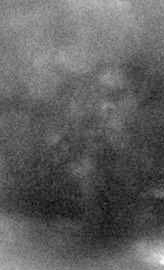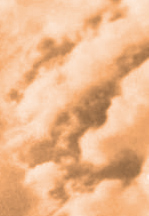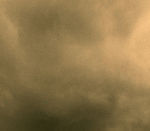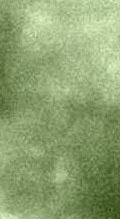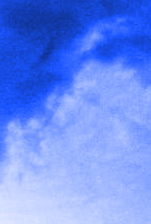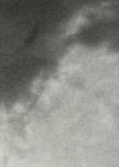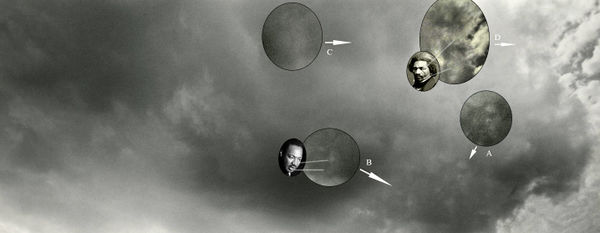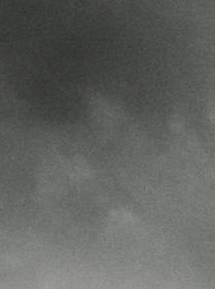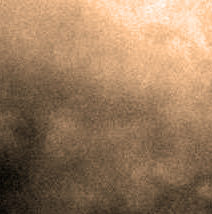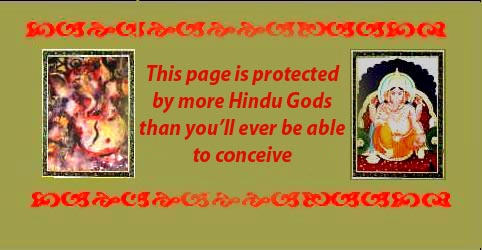Guidebook to the Voting Rights Movement related faces in the cloud
We politely repeat, welcome to the Guidebook to the "Voting Rights Movement Related Faces in the Cloud". The cloud can be seen floating above, while the entire iconic photograph (where it usually resides) can be found in the above links. The full 1965 photo by Look magazine photographer James Karales is the most honored and beautiful photographic image from the 1960's American Civil Rights Movement.
Introduction
James Karales' emotionally moving photograph shows the marchers marching for voting rights along the Alabama highway from Selma to Montgomery. It portrays their joy and celebration. It also shows what can arguably be the celebratory images in the cloud of James Bevel, Martin Luther King Jr., John Kennedy, Robert Kennedy, maybe/maybe not Abe Lincoln, possibly Frederick Douglass, certainly Lyndon Johnson (at least within the foul lines), and, not last nor least...wait for it...just one moment longer...the Goddess of Liberty. The images all seem to be looking down upon the line of marchers.
At the moment Karales' photograph was taken the 1965 Selma Voting Rights Movement had already won the right to vote. All that was left were the details, the signing ceremony, and the after-party. This occurred because when the marchers first marched two weeks earlier, walking in trepidation but walking, they crossed that bridge when they came to it. Selma's Edmund Pettus Bridge to be exact. When they finished crossing it, and the people on the front lines readied themselves to step out of Selma's city limits smack-dab (literally) into the territory of the Alabama State Troopers (a roving band of good-ole-boys deputized by Governor George Wallace) the marchers met just a wee bit of resistance from their welcoming committee.
"Marchers, introducing the Alabama State Troopers." "Do not cross this imaginary line." "Sir, we are respectfully crossing this imaginary line." "Troopers, roll up your sleeves and have at it."
When President Lyndon B. Johnson saw the film of the marchers on their valiant but foolhardy attempt get themselves beaten like dogs, stomped on like centipedes, scratched up like field mice played with by field cats, and clubbed silly like the Chicago Seven (they don't call it "Bloody Sunday" for nothing) he angrily called for an immediate Joint session of Congress. Standing on a wooden podium in the heart of the American republic, President Johnson ordered Congress to give these citizens the right to vote. And to do it Right Now! No dilly dallying, scallywagging, lackadaisying, or getting up on their high horses. LBJ, by the way, (how many kids did you kill today), showed up late to this cloud party.
So when the determined activists recovered from their "Bloody Sunday" hoe-down ("swing your baton round and round, club a gal on your left and prom-en-ade around the gore") and obtained a court order to open up the highway, they marched again two weeks later. It was a pre-internet meme and a pre-Superbowl phenomena! Hundreds of marchers walked or limped ten miles a day down the highway from Selma to Montgomery - Alabama's state capitol - and almost everyone in the United States knew that the people of the Selma Movement were marching to victory. For this march was a visible affirmation of their sincere nonviolent intent to see voting rights assured for all adult Americans, a celebration of Lyndon Johnson joining the movement (which he'd done when he stood before Congress and the world and declared that "We Shall Overcome"). But most of all, and truth be told as it must in these matters, the first march, the one that's been labeled "Bloody Sunday", was the culmination of a strategic way for people to blow off some steam.
A young man, Jimmie Lee Jackson, had been murdered during the movement. He was shot down by an Alabama State Trooper during a nighttime march in nearby Marion, Alabama. Somebody had turned the streetlights off, people ran, and Jackson was shot while protecting his mother, Viola, who herself was being clubbed while trying to protect her 82-year old father, Cager Lee, who was being beat down too. Man, a generational three-fer. That was cold. And that was the last straw. Many of Marion's peaceful law-abiding citizens took out and cleaned their guns and rifles. They knew there was retaliation to be had, and that this kind of retaliation comes with metal a'flyin'.
Meanwhile, James Bevel, the SCLC official who'd initiated and was directing this movement, felt the anger and hurt. He wanted to hurt somebody too. He knew that Jimmie Lee Jackson was shot not only during his movement, but maybe because he'd been off-watch. At the time of the shooting, Bevel was chained to a hospital bed after catching both pneumonia and a major-league beat-down himself from the police. He'd been arrested for nonviolently standing in-line outside of Selma's Voter Registration Office so, as luck would have it and often does, the police finally had the leader of the Selma Movement alone. Even if was only in an elevator a few feet from that registration office. After some hands-on treatment by Selma's finest, Bevel was chained to a hospital bed where, a few days later, he was handed divorce papers. In sports that's called piling on.
Well, James Bevel finally got out of the jail hospital one night and went to Marion to work with the people there. When he got back to Selma and heard that Jimmie Lee Jackson was going to die, he bitch-shoved his wife for telling him that news and for asking him for a well-earned divorce and, at that exact moment, Bevel knew that both he and the movement had gone off the deep end. He knew that the people of Marion and Selma were feeling as much anger and pain as he did, and would be as out of control as he was. Bevel had to find a way to fix all of it.
So he left the room where he'd just shoved his wife onto the bed and, pacing across the front lawn and the woods behind it, circled Selma's Torch Motel over and over again. He walked until he finally came up with an idea. After telling activist and motel night clerk Annie Lee Cooper and some other colleagues about his plan he went to Cager Lee to ask for his approval, and then before too long James Bevel was standing at a church pulpit in Marion inviting the people to take a walk with him. He told them he was going to walk down the highway to have a talk with the Governor. He wanted to ask George Wallace just one question: "Did you order that the streetlights be turned off?"
When Bevel asked if anyone wanted to join him on his walk, the demonstrators forgot about cleaning their guns and started polishing their marching boots.
Jim Bevel also probably knew that walking down the highway would give everyone a good workout. President John Kennedy (who appears in the cloud - why wouldn't he?) had heavily promoted 50-mile hikes, almost the exact distance as this trek. History tells us that the final march went off without a hitch. Without a Hitchcock actually. Alfred hadn't planned to attend, and why he didn't is still a mystery.
"No", George Wallace told Bevel when they met at the conclusion of the march, he did not order the streetlights turned off, nor knew anything about the protest before it happened. He knew nothing, nothing. And now that you know some of the story of the 1960s Voting Rights victory, see if you can be the first to find women's 19th century voting rights leaders Emmeline Pankhurst and Elizabeth Cady Stanton. Or Alice Paul, the James Bevel of the 1910s Women Voting Rights Movement. (EDIT: One's come in, the smart money is on Alice Paul).
Cloud-sighting instructions:
Some people will see the faces quickly, or at least one or two of them. Once you see one you'll at least gain a level of trust that we're not punking you (which we might be). Or you may be able to perfectly make out none of the faces with just a brief inspection. Then the Guidebook asks you to please consider spending some time with it. If it's as hard for you as those 3-D images jumping-out of 2-D images (remember those books and posters from the '90s where you had to go into the 4th-D in order to obtain the 3-D?) - or the "I Spy" illustrated novels which ask readers to find assorted odds and ends in a photo of a haunted house made out of miniature toys, dust bunnies, and other clutter, please consider spending at least as much time looking at the pictures here as you've done with a page of one of those needle-in-a-haystack classics.
These cloud images seem identifiable once you spot them. When you get good at it, and see them all, if you want the whole experience - to take it to the next level - spend some quality time with the photo and the images. This will force your brain to imprint the full picture, a picture which, we assure you, maybe does or really doesn't (don't you want to find out?) contain all of the information pointed out in this page. If you do this enough, whenever you look at the entire photograph you'll see a panorama of the brave and foolhardy Selma-to-Montgomery marchers walking along a highway knowing that they've been joined by America. And you'll see, formed of images in the clouds, from left to right, what delusional people with 20/20 nearsight claim are images which at least in the ballpark - most between the foul lines - of Robert Kennedy, Lyndon Johnson, John Kennedy (JFK giving a thumbs up sign), maybe Frederick Douglass, James Bevel, maybe Abe Lincoln, Martin Luther King Jr., and the Goddess of Liberty. With a suffragist or two thrown in for the ride.
The images are all arguably looking down upon and along the line of marchers.
Come on, it's photoshopped, right? Hey, we had to ask.
When James Karales marched with the marchers from Selma to Montgomry and took his photograph in 1965, it was long before photoshop was available. And besides, Duke University has the negatives and contact sheet, and if you can't trust Duke University you can't trust Yale. Since nobody has mentioned these faces until now, and this website is by nature totally loony, we are either being truthful and having a ball while doing it, or we are delightfully putting you on. The only other choice which makes any sense when you try to wrap your head (or your students or conference attendees collective heads) around it, is that uncyclopeida is involved hip deep in a sinister plot hatched by Look magazine in 1965.
Yep, you caught us. Look magazine used advanced alien double-dog triple-reverse-engineered highly-improper photo technology to ultra-perfectively place the faces of mostly then-living people into the photo, its negatives, and its contact sheet. Then, in a secret meeting of those involved in this unreasoned-out plan, instructed everyone, under penalty of nothing, to never mention them again. Look magazine then laid low by going out of business in 1971. In a brilliant strategy they decided to let a few people find the images 48 years after the now-iconic photo was first published (in the case of James Bevel's face, 43 years later). So yes, it's been Look magazine all along! They hatched this plot. So if you see or can't see the faces, or spend/don't spend some quality time with them to imbed them into your brain's pattern-recognition software, be assured that somewhere a few historians and historian-fanboy-wannabees will still somehow be arguing that Look magazine obviously photoshopped all of the faces into the photograph. "It can't be real, can it?" they'll ask themselves nervously at symposiums, learned conferences, academia luncheons, and under the covers at night. So spend about an hour looking. If you still can't see them, or even if you can, come back tomorrow. Pack a lunch.
The voting rights movement related faces in the cloud:
James Bevel
James Bevel, Director of Direct Action and Director of Nonviolent Education of the Southern Christian Leadership Conference (SCLC), the Father of Voting Rights in the 1960s, initiator and organizer of the 1963 Birmingham Children's Crusade and the Chicago Open Housing Movement, and the person directly responsible for bringing SCLC to Selma, for leading that movement, and for initiating and directing the Selma to Montgomery march, can be lost and/or found in the photos above.
The image that some cloudies call James Bevel is circled in red in the first one (picture courtesy of Above Top Secret member alienjuggalo - a name which will live forever just because it's cool). This image, some say while uttering utter nonsense, seems to look like an 1980s-era Bevel, long before he got himself into some hot water with his daughter. Bevel's eyes are closed in this image, he has a full beard, and he may be either bald or wearing a yamaka (just as he wore during his movements to honor the Jewish prophets and to probably cover his baldness). Bevel was way too young to lose his hair, but has now joined the hair club for men in a cloud.
Martin Luther King, Jr.
Martin Luther King co-founder and president of SCLC, called for full voting rights in his 1957 "Give Us The Ballot" speech during the Prayer Pilgrimage for Freedom rally in Washington, D. C. In late 1964 he finally agreed to bring the entire Southern Christian Leadership Conference to Selma to work in James Bevel's, Diane Nash's, and James Orange's ongoing Alabama Project for Voting Rights, as well as to finally answer Amelia Boynton's open-ended request asking for SCLC's help in Selma's ongoing movement. And when King got to Selma, probably right on time, he brought the press and the public movement with him.
The near-photogenic image of someone here seems extremely obvious to people off their meds, and they claim to see a man peeking out from behind the white clouds near the top right-hand corner of the photo. He's kind of hesitant to come all the way in, but he can't help himself, he has to have a look (A Look magazine to be exact, and a photographer willing to march for the full 54-miles).
The "King" image can be seen by functional lunatics in the three dark openings in the white cloud in the picture above, a transformative photo-crop again courtesy of alienjuggalo (may his name be praised as no other except a few). Look at the space between the top of the "Share" tab and the "e" in Share. Then move along that space to your left until you reach the middle of the first black area you come to. There you may be able to faintly (actually right there, like a photographic image) see a black guy's left eye, and then make out his entire head as it looks down along the line of marchers. Still can't see it? His left eye has an iris and eyelashes, for tribble's sake. The tiny white vertical cloud hanging down in this dark space is the image's nose, with a detailed eye to either side.
If you still can't see this, think of the cloud as a white wall. A wall that has holes in it. And a black guy is standing behind the wall, looking out through the holes.
The top of his head, his hairline, and some of his forehead can be seen in the hole in the wall nearest the top. His eyes, nose and mouth are in the second opening. And the image's chin and part of his mouth are in the third opening from the top. Keep looking at it until your brain let's you see the image. It'll do that when it finds out you're serious. When it pops into view, you might freak. The black guy (arguably Dr. King, and to some it sure looks a lot like him) and everyone else mentioned on this page are looking down along the line of marchers. Of course they are.
Links to the full photo: here or here or here or here or here
JFK's head is right in the middle of the cloud, from top to almost bottom. He's giving a thumbs-up salute. Ask not, John, what this cloudbank can do for you...
John Kennedy
John Kennedy, the U.S. president during the earlier phase of the Civil Rights Movement - including the Birmingham Children's Crusade which led directly to the March on Washington and the 1964 Civil Rights Act - is very large and stretches out across the entire middle of this crowded cloud bank. JFK's face looks a bit to his right as he scans the line of marchers at the front of the photo. You might find his eyes first, which seem, like his cheekbones, to be obviously belonging to JFK at the exclusion of all other famous individuals.
If you don't see him, one way to spot JFK is on the full linked photo: the white marcher who looks like he has the flag coming out of his shirt - the one walking behind and reaching for the little girl in front of him - if you extend the line of the flagpole upwards it would just about bisect Kennedy's face right up the middle (as bisecting tends to do). His eyes are on either side of that bisecting line. Then the black portion running along the top of the photograph is his hair - you can even see the sideburns going down his face on his left side - which runs along the entire middle at the top of the photo. The top of his head is cropped just a little above his hairline, as if it's, ah, gulp, /straightens tie-dyed bow-tie unconsciously, missing?! Once you get one of those features you may be able to see the rest of his face. Then look to his left, at the same size scale - the delusionals say he's holding up his left hand in a thumbs up salute! Lord have mercy.
Robert Kennedy
Robert Kennedy, who as U.S. Attorney General worked for voting rights and was active in the cause after he left office, was found in the cloud by Baddogma at ATS. RFK is at the far left of the big picture, and the triangle patch just above the first three strutting marchers on the linked original can be seen as his nose and some of his left cheek. We're looking at the image from above and to his left side, and the image looks down and off the photo to the left. Its hair is seen from the top....well, find the nose and you may see him looking at whoever was marching up ahead. Once you have his nose, eyes, and forehead, you may easily see the top of his Kennedyish-style-hair, if you're of a mind too. Baddogma compares the texture of this image to a Claude Monet painting. RFK, like his older bro, is holding up his left hand and giving a thumbs up salute. Kind of expected that by this point.
Either Abe Lincoln, Hellboy, or old man Bevel
Abraham Lincoln, yes, uncyclopedia thought Ole Abe would be in here. Some people say he looks like Hellboy, but that may just be the light. Lincoln began advocating for voting rights for African Americans just before he died from rapid-onset metal overdose - the two things seem related by the way - and he's on James Bevel's left, but a bit larger.
Frederick Douglass
Frederick Douglass ("Freedom Freddy D." to his peeps), who worked for African-American and women's voting rights in the 19th century, may be just to Bevel's right, a bit larger, looking in the same direction as the rest of the crew. His cone of white hair rises above his face, although the forehead is too elongated from one point of view (the one where you can make out his customary large head of hair), and he has an appropriate looking mustache. Maybe the best or least recognizable of the bunch, and you can make out Douglass (or is it Mark Twain?) with a little help from your friends.
Who What Now?
Then there's a young blonde woman. She's in the bottom white clouds at the right of the photo, and she's looking a little to our right, staring down along the line of marchers. Her features are tinier than the rest, so she appears from the waist up. She kind of looks like a cute fairy (wouldn'tchaknowit) and...well...in her right hand she's carrying a long staff with a flaming tip, kind of like, ah...many portrayals of the Goddess of Liberty (you gotta be kidding me!). And she's wearing a perfect ten or eleven sectioned tiara (stop, just stop it).
Surrounded by blue, dressed in white,
The Goddess of Liberty
The Goddess of Liberty is honored by some nations as their national symbol and protector, and has also been honored throughout history by those who've either been greatly oppressed or have a Goddess fetish. She's usually pictured as having some kind of tiara and carrying either a flaming staff or a sword. During this march, and for Karales' photograph, her sword wasn't needed - LBJ had made sure of that with his demand for the right to vote. So it looks like she went with her fashionable flaming staff.
Flaming staff
In the blue tinted educational-crop the flame floats above the other white clouds, in the middle-right, near the top, and the dark line of her staff extends downwards from the flame to her right hand. On the black and white photo the cloud/flame is also the white portion in the upper-right center. A thin black line extends downward from the flame in that one as well (and if it didn't then you'd have something to write home about).
The hair of Goddess and the eye of newt (Well, no. No eye of newt.)
Her long white full hair runs right along the dark area of the black and white picture (along the blue in the other pic), and she herself is totally in the white section. The dark border sweeps down to her shoulder, and she's wearing a fluffy fairy-like dress that puffs out around that shoulder. Her hair goes up and all around the top of the dark border - the entire white section directly bordering the blue or black color in the above pics. If you can see her, look right along the top of her hairline, including the middle of her hair where two little white points stick up, and...
...is that a tiara? Yep. A tiara with five or ten or eleven distinct sections
The tiara runs right across the top of her head, exactly where you'd expect it, and has distinct segments. It also has an additional center portion which itself has five or six sections or points. The image still looks good and holds together at 300 and 400 percent. Uncyclopedia editor XDshempXD was the first to notice and describe the entire tiara, which up until then had only been described as the two-points in the middle of her hair built from five or six segments.
By the way, Baddogma noticed that she's wearing a necklace around her long neck. Either that, or maybe it's the frill of her V-neck dress. Never can tell with Goddesses.
And just in case you remember what we didn't say earlier but tried to block out of your mind nonetheless, there's also a guy looking down at the marchers who looks a lot like Pan. Kind of a Frank Zappa-looking Pan, with his customary large Mr. Spock goat ears (didn't know that about Spock?). He can be found just to the right of JFK and to the upper left of RFK. Where he usually sat.
Lyndon Johnson
U.S. President Lyndon Johnson demanded that Congress write and pass the 1965 Voting Rights Act after seeing the marchers knocked senseless upside the head off their rockers when they tried to step off Selma's Edmund Pettus Bridge. That event, as you know by now, was soon named "Bloody Sunday". Johnson became quite familiar with bloody Sundays during the Vietnam war.
The image, which arguably looks like LBJ, was found late in the game. Its head slants downwards at the same angle as RFK's, and the image, which is looking down at the marchers (surprised? show of hands?), can be found on the full cloud photo on RFK's left (no, not your left, RFK's left).
LBJ, well, this isn't the best formed image, as a very tiny bit of his face below the nose and above his mouth is missing. But bloggers can't be choosers, and rest assured, if we at uncyclopedia were directing those trillions of tiny atmospheric misted vortexed bits of loose free-wheeling charged water molecules forming a self-attracting visible vapor turbulently flowing along each individual eddy moving through microscopic dust particles violently swirling within a maelstrom of wind consisting of hot and cold pressured air pockets while the whole kit and kaboodle is sunlit backlit and shadowed through varied thicknesses of infinitely random condensations exposed to a camera lens at the very instant that James Karales decided to click the shutter we would have certainly ordered up a little more detail in this one.
The Observer1 photo observation
ATS's Observer1 sent this illustration in and found at least two three more new faces, one of whom may not be Alice Paul but is close enough for a measurement.
At "A" he didn't know who he was seeing, and there's another face in one point-of-view there, but that circle goes around parts of Jim Bevel's face or the long-odds mean nothing.
At "B", Observer1 sees his Dr. King image, looking straight down on the marchers. It fits the "arguably" category once you spot it, as, of course, does the other Dr. King image peeking out from near the upper right hand corner.
At "C", he sees a woman. Might this be the long awaited voting rights movement icon Alice Paul? Well, could be should be. Alice Paul ran the 1910's Women's Voting Rights Movement in the United States, in the process innovating great swatches of the science of nonviolence while initiating and leading major parades, significant silent protests, and doing the day-to-day grunt work of her movement when she wasn't busy getting force-fed in prison. Paul perfected parts of, and greatly influenced, the science of nonviolence as much as Mohandas Gandhi did. So for Alice Paul to miss this one-in-a-nillion cloud bank would be a shame. And arguing on her behalf that she may be the woman that Observer1 found isn't a hard task. Besides, the editors of Look magazine gave uncyclopedia a large bonus in 1965 to bring Alice Paul out late in the game.
At "D" Mr. 1 finds his Frederick Douglass candidate. A good one, as is the other image found, the one next to Bevel's, who has a little too-high of a forehead for uncyclopedia's comfort but besides that has Douglass pretty well down. It arguably also looks a bit like Mark Twain, who would show up on a satire site (Twain actually paddled the Civil Rights Movement a little upstream with his Mississippi River books). Observer1's Douglass may also fall within range for James Orange, and if you don't know who the great James Orange is, apples come into play.
But who might this be?
Found by funbox from ATS in the fiftieth quarter-eight of the Calvinball game, this handsome mustached sideburned gent looks down on the marchers from in-between and about the same size as the "RFK" and "LBJ" images. It has a hint of a look, a just-about-there persona - if his overhanging forehead hair is discounted as a cloud shadow (but then again, aren't they all?) - of either a young previously-mentioned James Orange or a young Ralph David Abernathy.
Orange, who became active during the Birmingham Movement, worked with Bevel and Diane Nash on the voting rights movement in Alabama for a year-and-a-third previous to the rest of SCLC joining them. Rev. Abernathy, a lifelong activist, was Dr. King's close associate, SCLC co-founder, and SCLC official during the movement years - and a man who stood with his friends.
The Guidebook thanks you for coming by, and ends by quoting the ravings and preachings of the once melodic smooth-as-silk voiced but later should-have-rethought-cigarettes-voiced singer/songwriter Joni Mitchell:
From up and down and still somehow
It's cloud's illusions I recall
Questions and answers
The Guidebook has time for one question. Yes, you over there, with the bandana and Obama button.
CNN's Anderson Cooper here. There seems to be a glaring omission. Why isn't Susan B. Anthony, the iconic American suffrage leader, in this cloud? She's on a postage stamp - here, I have one in my pocket - so I would think the least she could do is show up here.
Your wish is the cloud's command.





